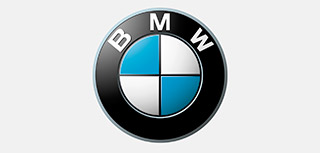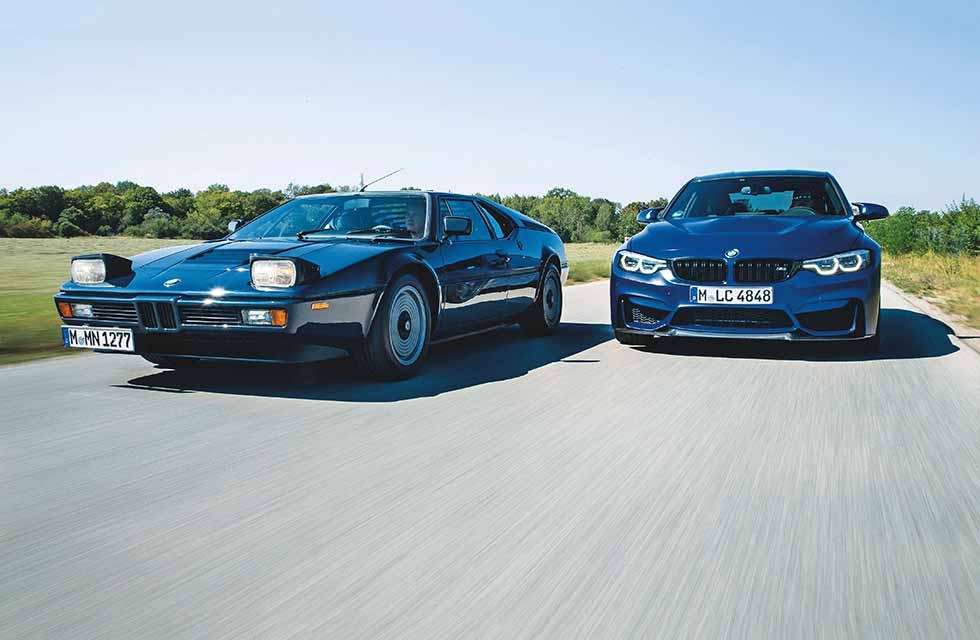
Tasty M car treats! Driving two legends, back-to-back Shane O’ Donoghue is the lucky man who gets the chance to sample two iconic BMW M cars, back-to-back, but separated by 40 years of engineering know-how. Pics: Gudrun Muschalla.
///M CARS THEN AND NOW Blue blood Brothers
What an experience awaits me as I stroll towards this fascinating pair of Munich’s finest. One is a low-mileage and highly original example of the BMW M1 E26, the first official M-badged production car, while the other is a 2018 M3 CS F80. The latter is expected to be the swansong for the F80-generation M3 saloon, and I’m eager to compare and contrast both cars.
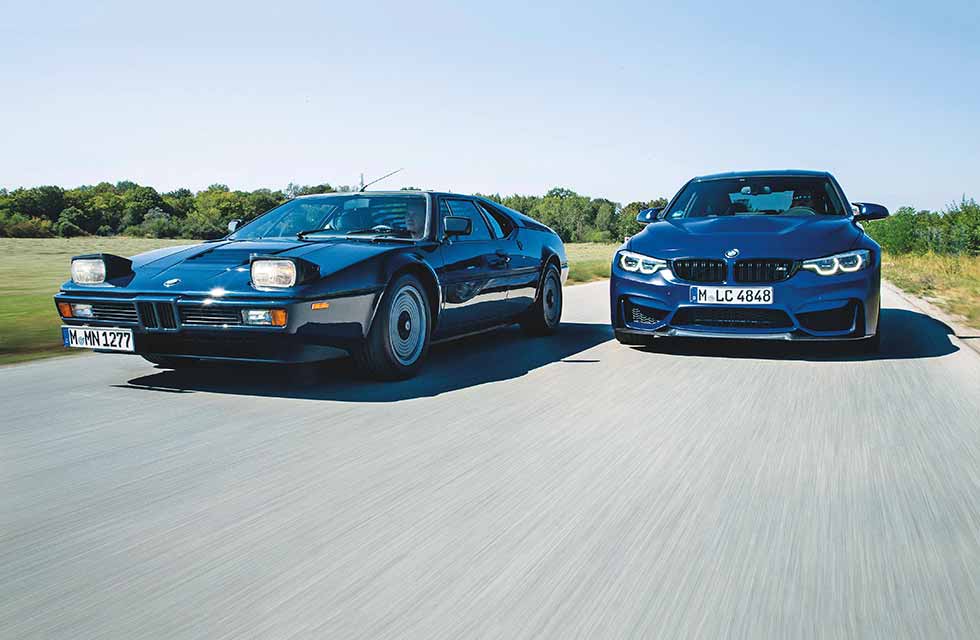
The M1 was first unveiled at the 1978 Paris Motor Show, so there are 40 years of BMW M division development expertise separating these two desirable machines. Things have come a long way, haven’t they? The M1 borrowed for this feature – from BMW Classic in Munich – is actually one of the earliest cars made; the ninth ever built, in fact. Its early history is a little hazy and, though the records indicate that it never left BMW’s ownership, it wasn’t actually registered until 1991, by which time it was 13 years old! At that point, its glass-fibre reinforced plastic bodywork underwent some restoration, but it’s otherwise untouched.
REGULAR USE
Since then it’s been used regularly on classic car events and photoshoots such as this, but it’s hardly wrapped up in cotton wool and trucked everywhere. The odometer shows over 27,000 kilometres (nearly 17,000 miles) and, during my two days with the car, I covered well over 150 miles at the wheel – not all of it at low speeds.
Where the M1 flows over and works with the road, the M3 is rigid and less compromising
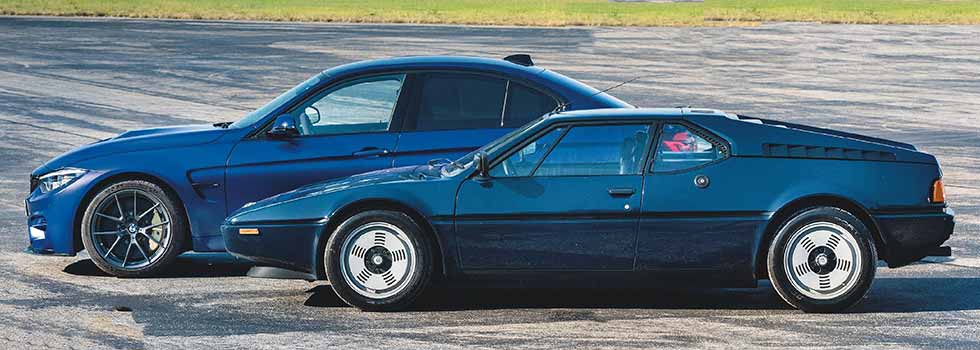
Officially, BMW Motorsport GmbH came into existence in 1972, kicking off with a mere 35 employees, led by Jochen Neerpasch – an ex-Porsche works driver and Ford’s Racing Manager in Cologne, before he moved to Munich. It initially focused solely on developing and building race cars, then took over the BMW Driver Training before, in 1974, its staff started to work on the occasional road car for enthusiastic customers.
I’m encouraged to explore the upper reaches of the rev counter, despite the theoretical £650,000 value of this car
Until this point, all the racers were based on existing BMW models in production, but then the decision was taken to create a bespoke vehicle designed to compete in Group 4. To satisfy the FIA’s homologation rules, a minimum of 400 road cars would have to be produced, and so the BMW M1 was born.
Not without a few hiccups, I might add, notably on the production side. Lamborghini was initially contracted to supply the body and spaceframe chassis, but ran into financial difficulties, which caused a delay to the project. So BMW switched the chassis production to Marchesi, and the bodywork to T.I.R. (both in Modena, Italy), before sending them to Giorgio Giugiaro’s company, ItalDesign, for assembly with the interior.
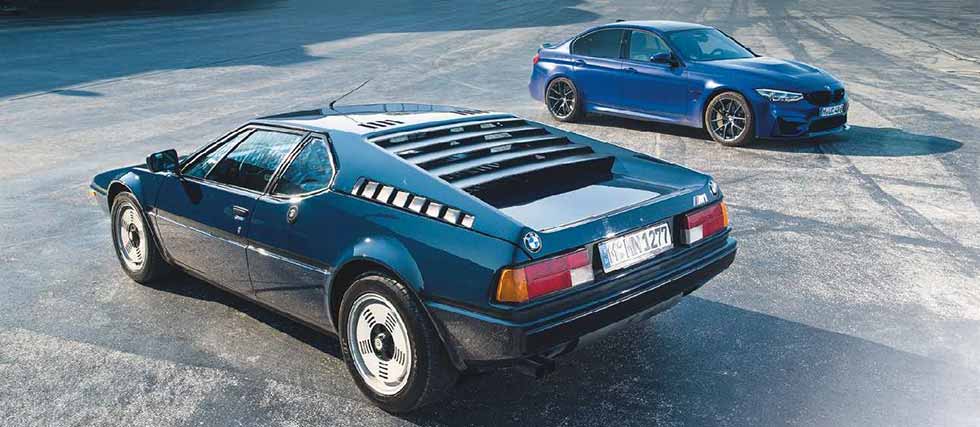
After this, the cars were shipped to Baur in Stuttgart to be joined with the BMW-produced mechanical components. It’s a wonder that the M1 was as highly regarded as it was, given such a convoluted chain of production.
WINNING FORMULA
Nonetheless, and aside from the M1’s use on track, BMW M had clearly hit upon a winning formula for the road. Demand for the M1 outstripped supply, and this encouraged the division to look a lot more seriously at ramping-up its road car operations. Today, from those small beginnings, BMW M, employing about 800 people, is a very different beast, as are the cars it makes. That’s immediately obvious when you park the current M3 CS next to the M1.
For a start, the new car appears to tower over the old one; in fact, it’s more than 300mm longer, 50mm wider and nearly 300mm taller. In fairness, at 1,140mm high, the M1 is a very low car by any measure. And you feel it when you ease yourself into the cabin. Even those under six feet tall will find the windscreen header rail uncomfortably close to their head, and you feel like you’re sitting on the ground. In contrast, the door opening in the M3 is generous, and anyone can easily step into it and have stretching room in most directions.
Next, you’ll notice how drastically offset the pedals are in the M1, making room for large wheel wells. And there’s nowhere to put your left foot when it’s not in use on the clutch pedal. The black leather of the M1’s seats is well-preserved, but the bolstering was never as figure-hugging as those in the M3, which could be taken as a clear sign of the differences in cornering speeds and forces between these two cars.

SUBLIME WHEEL
The M1’s steering wheel is sublime, though, even if the leather on the rim is well-used. It’s small in diameter, simple in design, free of clutter and has a delicately cross-sectioned rim; something that I’ve reckoned that BMW M has needed to remedy in its cars for some time. The M3’s wheel is beautifully made (and has a wonderful Alcantara wrapping in the CS), but the rim is far too thick. What’s more, the overall diameter of the wheel is large, no doubt to allow a decent view of the instruments beyond.
As clear, precise and stylish as the CS’s grey clocks are, there’s real charm to the M1’s simple dashboard layout (even if it does cause a nasty reflection in the windscreen in bright sunshine). The Jaeger analogue instruments are compact and there’s little distraction. Saying that, I couldn’t make head nor tail of the German air conditioning controls, and soon discovered that – in the height of a hot summer – and even with correct operation, this particular car only has air conditioning in theory. The flimsy air vents in the doors don’t seem to do anything at all to help keep the occupants cool!
Elsewhere, the switchgear dates the M1’s cabin with its chunkiness, but there’s a solidity to the interior that’s a little surprising. Exposed screwheads give it a vaguely motorsport feel today and, for some reason, the cover in front of the storage box between the seats is made of heavy, indestructible-feeling metal. Odd in a car that was designed to be a lightweight racer. The cabin of the M3 is more luxurious, obviously, even in CS guise, with its minimised centre console.
While the CS’s exterior is bristling with aggression and presence, it’s nevertheless based on the silhouette of a mass-market, four-door saloon – the 3 Series – so it can’t hold a candle to the iconic design of the M1. Penned by Giorgetto Giugiaro, the M1’s shape owes much to the 1972 BMW Turbo concept car, but the production model shuns much of that show car’s extravagance for a simple delicacy of line and little in the way of unnecessary add-ons.
UNMISTAKABLE LOOK
The M1’s pop-up headlights and small kidney grille are complemented by the impossibly raked windscreen, while the rear features those unmistakable louvres and distinctive double BMW badges. Where the M3’s lightweight alloys measure 20 inches at the back and 19 at the front, and have more space than metal in their design to aid brake cooling, the M1’s flat, 16in Campagnola rims barely have any venting, and are shod with modest, 205/55 Dunlop Sport Maxx tyres. The M3 CS, meanwhile, rides on track-focused Michelin Pilot Sport Cup 2 tyres, measuring 265/35 up front and 285/30 at the back. So there’s a lot of extra sidewall on the M1! Walking around both cars to drink in the details, it’s difficult not to be impressed by the sculpted bonnet and carbon fibre boot spoiler on the M3 CS. They look good and are beautifully made. However, the M1 holds your attention for longer, even if its build quality isn’t a patch on the new car’s. I discovered that you can pop open the little glass windows aft of the door glass; they’re hinged at the leading edge, so can open wide.
This isn’t for cabin ventilation, though, as the opening is ‘outside’ of the rear window, accessing the top of the engine cover. Even my BMW Classic hosts were scratching their heads over the reason for this, as they don’t offer noticeably easier access to any aspect of that engine, either.
POWER DIFFERENCES
Both these M cars feature straight-six petrol engines, but the M1’s M88/1, naturally-aspirated unit shares little else with the modern-day, twin-turbocharged S55 powerplant in the M3 CS. A little obscure detail I uncovered, however, is that the S55’s bore of 84mm is the same as the M88/1’s stroke. The M88/1 is termed an ‘oversquare’ engine, where its bore (93.4mm) is longer than its stroke. This makes for a lower engine to help with the centre of gravity and, also, is better-suited to high-revving, naturally-aspirated applications, such as the M1.
However, you don’t need to rev the M1’s engine to keep up with free-flowing traffic; it’s quite tractable at low speeds and, despite the heavy clutch and slightly recalcitrant manual, five-speed gearbox (aside from getting used to the ‘dogleg’ position of first gear), it’s not at all difficult to drive. Given its original ‘supercar’ billing, it feels remarkably docile and normal, actually. The compact footprint helps enormously, and thin windscreen pillars help with visibility, too, which isn’t as poor as the flat shape might have you believe. Naturally, if you leave the M3 in its default Comfort mode, it’s even more civilised, and its dual-clutch automatic transmission takes the strain in stop-start traffic as well.
Speaking of which, when the heat of the day increased, the M1 became very difficult to manoeuvre at low speeds, as the engine had difficulty idling. BMW confirmed that this particular car is known to be running rich, but fixing it isn’t just the work of an hour in the workshop. Indeed, the set-up and maintenance of the Kugelfischer mechanical fuel injection is one of the M1’s only weak points. Consequently, I gather that BMW Classic intends to give this car’s injection system a full service over the winter months.
A THRILL TO DRIVE
Out on the open road, however, there are no problems with the car’s performance, and I’m encouraged to explore the upper reaches of the rev counter, despite the theoretical £650,000 value of this car. Indeed, only when you hold the throttle pedal down past 5,000rpm, does the M88/1 engine truly come alive.
Accompanied by the distinctively BMW straight-six howl, it suddenly begins to live up to its performance car billing, and it’s a real thrill to hear this engine working hard. At 1,300kg, the E26 M1 isn’t a complete featherweight, but 286hp and 243lb ft of torque make light work of that, and the car is pleasingly fast on the move – albeit more quick, modern hot hatch than ballistic rocket ship.
The latter words could undeniably be applied to the BMW M3 CS F80. Its peak power figure of 460hp is sensational enough, but it’s the 442lb ft of torque that defines this car’s performance, especially as it’s available across a wide band of revs. It means that it takes no effort at all to drive the M3 CS quickly (indeed, I hit an indicated 160mph on the autobahn on the way back to the airport, with ease). The modern electronics and injection system mean that throttle response in the turbocharged CS is sharper than that of the old car, too, so it feels more immediate, at all times.
And while that has a time and a place, the downside is that the M3’s dynamics come with a price; its hard-edged ride. Where the M1 flows over and works with the road, the M3 is rigid and less compromising. Sure, it’s a far superior car when it comes to tackling corners, but the M1 isn’t too shabby, either.
Getting the two cars together was a wonderful illustration of how far BMW M has come in 40 years, from the M1, which, as a road car, was built to justify the existence of a bespoke racer, to the M3 CS; very much a road car, but one that aims to give its owner the feel and performance of a racer. Both are fascinating machines in different ways, and it’ll certainly be interesting to seek out the M3 CS in another 40 years, to celebrate BMW M’s 80th!
TECHNICAL DATA FILE SPECIFICATIONS 1978 BMW M1 (E26)
VALUE TODAY: £650,000
ENGINE: six-cylinder inline
DISPLACEMENT: 3,453cc
MAX POWER: 286hp at 6,500rpm / DIN
MAX TORQUE: 243lb ft at 5,000rpm / DIN
TOP SPEED: 162mph
0-62MPH: 5.6 seconds
UNLADEN WEIGHT: 1,300kg
GEARBOX: five-speed manual
{module BMW M1}
TECHNICAL DATA FILE SPECIFICATIONS 2018 BMW M3 CS (F80)
VALUE TODAY: £86,425
ENGINE: six-cylinder inline
DISPLACEMENT: 2,979cc
MAX POWER: 460hp at 6,250rpm / DIN
MAX TORQUE: 442lb ft at 4,000-5,380rpm / DIN
TOP SPEED: 174mph
0-62MPH: 3.9 seconds
UNLADEN WEIGHT: 1,585kg
GEARBOX: seven-speed, dual-clutch automatic
There are 40 years of BMW M division development expertise separating the M1 E26 and the F80 M3 CS.
It’s only when you push the M1’s engine beyond 5,000rpm, that the car truly starts to come alive. It’s a real thrill to hear the engine working hard.
The F80 M3 CS’s dynamics come at a price; while the M1 flows over and works with the road, the M3 is rigid and less compliant.
Despite its greater weight and overall size, the BMW F80 M3 CS is faster and quicker than the M1. Both cars use straight-six engines, but the M3’s produces 174hp more.
Despite its age, this BMW Classic-owned M1 has only covered about 17,000 miles. The side bolsters on the seats are decidedly lacking by today’s, performance car standards.
The switchgear certainly dates the M1’s cabin with its chunkiness, but there’s a solidity to the interior that’s a little surprising.
The BMW E26 M1’s mid-engined layout leaves space at the back for a small boot area, much of which is occupied by the spare wheel.
Even drivers less than six feet tall will find the windscreen header rail uncomfortably close to their head in the M1, and you also feel like you’re sitting on the ground.
The M1 is truly unmistakable; the distinctive louvres and twin rear badges are unique features.
Chalk and cheese: but these two products of BMW’s famous M division both have high performance in their DNA.

